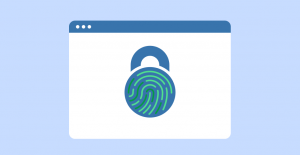Domain Management: What It Is and Why It Matters
Key takeaways:
- Domain management is key to keeping your website running smoothly and for making it easy for people to find.
- Effective domain management enhances your SEO by maintaining secure and reliable websites that search engines trust and rank higher in search results.
- Analytics tools are must-haves for domain management, providing insights into your domain’s metrics.
Domain names are important in modern business operations, as they establish a strong online presence. Data from IBISWorld shows just how big this trend has become. In 2024, experts valued the global domain name market at USD 9.5 billion and expect it to grow to $15 billion by 2033.
A strong domain name boosts internet visibility and enhances brand memorability. That’s where domain management comes into the picture. Domain management is the ongoing process of maintaining and protecting your domain name, ensuring your website remains secure, visible, and easily accessible online.
Here, you’ll learn what domain management is, why you need to manage a domain, and answer the question of: “Is it hard to manage a domain?”
What is domain management?
In simple terms, domain management refers to maintaining control over your online identity through renewals, security settings, and DNS configurations.
It encompasses all the important tasks required to maintain and control a domain name, ensuring the domain remains stable, secure, and fully functional. Website owners often spend all their time building and improving their actual website, forgetting about their domain.
Domain management is valuable for maintaining a website’s smooth operation and ensuring it is easily accessible to users.

Why do you need to manage a domain?
Managing a domain is the fabric of maintaining an effective online presence. Domain management keeps your digital footprint relevant by protecting your brand, enhancing visibility, and keeping your website reliable.
Domain management isn’t just another technical task you need to handle; it’s a smart business move. It answers the following:
- How secure it is. Domain management is important for protecting your brand. It prevents identity theft and service disruptions while securing financial interests.
- How well does it protect your brand. Domain management prevents fraudulent entities from impersonating your brand or diverting traffic via similar domains. It can maintain brand consistency, safeguard your reputation, and prevent reputational damage.
- How easily people can find you through search engines. Domain management enhances your search engine visibility by establishing credibility, enhancing user interactions, and refining technical elements.
On top of the following, good domain management allows you to:
- Avoid hijacking and domain loss
- Maintain good SEO
- Prevent cybersquatting
- Improve portfolio management
Avoid hijacking and domain loss
Losing control of your domain negatively impacts your online business. Domain management protects against domain hijacking (when cyber criminals steal your domain) and domain loss (when your domain expires due to missed renewal reminders or payment issues). Proper security measures like domain locking and renewal practices prevent both threats and keep your website safe.
Maintain good search engine optimization (SEO)
Good SEO depends on proper domain management that goes beyond preventing disasters, such as expired domains or hijacking, which can negate rankings. Strong domain management maintains your site’s technical foundation through the following:
- Strategic uniform resource locator (URL). Effective domain management guides website structure decisions. For SEO purposes, subdirectories like yourdomain.com/blog are generally preferable to subdomains like blog.yourdomain.com because subdirectories benefit from the main domain’s authority, consolidating SEO value.
- 301 redirects. 301 redirects are important for users and search engines to go from one URL to another. They’re must-haves for traffic from protective domains that guard against misspellings and brand impersonations. They also ensure Hypertext Transfer Protocol Secure (HTTPS) security, maintain website performance while preserving SEO value, and resolve broken links.
- Automatic renewal. Automatic renewal is a reliable way to ensure continuity, protecting your website from SEO consequences of missed renewals. It’s about stability, reliability, and preventing the loss of all the SEO work you’ve put in.
- Two-factor authentication (2FA). 2FA is an indirect SEO benefit because it’s a fundamental security measure that protects the foundation of your online presence. A secure website is a stable website, and it’s likely to rank well and maintain its search visibility over time.
- Secure Sockets Layer (SSL) protection. SSL protection, which enables HTTPS (Hypertext Transfer Protocol Secure), boosts SEO by enhancing website security, trust, and search results visibility. Without SSL, your website’s data remains exposed to threats.
Prevent cybersquatting
Cybersquatting is a fraudulent activity that involves registering a domain name that’s similar to your brand to confuse users. Common tactics include typo squatting or targeting misspellings (e.g., tiimemagazine.com) and brand impersonation or creating a website that’s similar to yours. Proper domain management prevents and combats these threats through strategic action, which includes:
- Secure your business name as a domain immediately.
- When purchasing a domain, also consider buying other popular extensions, such as .net, .biz, or .org, to protect your brand.
- Contact the cybersquatter directly to negotiate to purchase the domain at a reasonable price.
Improve portfolio management
Maintaining a domain portfolio is important, even for small businesses. This includes purchasing common misspellings of your main domain or securing it across different extensions.
This approach stops cybercriminals from taking similar names, protects your brand, and increases traffic by redirecting visitors who mistype your address. For example, if your site is “securebank.com,” buying “securebank.net” and “securebank.org” ensures that users who mistype the domain name still reach your site.
Is it hard to manage a domain?
No, provided you partner with a professional registrar. An effective registrar offers tools that make the task approachable. An extensive help section can make domain management user-friendly.
Reliable registrars will also include management software/dashboards that make auto-renewal options easy to find and access. The secret to effective domain management is setting it up correctly and keeping track of renewal dates.
In our case, Network Solutions makes domain management straightforward. We also have a team of experts ready to assist you with domain management.
How do I manage my domain properly?
Leverage the elements of domain management to remain competitive in the digital landscape. They ensure your website stays accessible, secure, and optimized for both users and search engines, making them important for online success.
Implement the following to safeguard your digital assets and gain a competitive advantage:
- Choose a reputable domain registrar
- Use the right Domain Name System (DNS) configuration
- Employ domain locking
- Configure WHOIS/privacy protection settings
- Monitor for unauthorized changes
Choose a reputable domain registrar
Registering and renewing with a reputable registrar is part of domain management. It features 2FA, domain locking, and Domain Name System Security Extensions (DNSSEC) for enhanced data protection. They offer transparent pricing and policies with no hidden fees, along with excellent and responsive support for any emergencies or questions. Being Internet Corporation for Assigned Names and Numbers (ICANN) compliant, they ensure global standards manage your domain.
In short, a good registrar secures your digital assets, mitigates risks, and ensures your online presence runs smoothly.
Why it matters: Reputable domain registrars are imperative for maintaining your online presence. A professional service will have transparent pricing that won’t hit you with hidden costs. Additionally, good registrars will provide services that protect your domain, such as:
- Protecting personal data
- Preventing domain hijacking
- Quality customer support
Use the right Domain Name System (DNS) configuration
Domain management and DNS are related; DNS is a technical part of domain management. Here’s how: domain management is the overall strategy and control of your domain, and DNS is the technical setup that directs traffic to your website, email, and other services associated with that domain.
It converts user-friendly domain names like yourwebsite.com into computer-readable IP addresses like 199.232.12.123. When visitors enter your domain in a browser, DNS directs their computer to the correct server hosting your website or email service. Without proper DNS setup, your domain becomes just a name with no way for people to reach what’s connected to it.
Why it matters: Proper DNS configuration ensures your audience can access your site. It also provides a better browsing experience with a fast and secure website, enhancing your brand.
Employ domain locking
Domain locking, also known as domain transfer locking, prevents unauthorized transfers and changes to your domain, even if your registrar account is compromised. When combined with proper DNS settings, domain locking ensures your domain remains accessible to legitimate users while remaining secure from malicious activities.
Why it matters: Domain locking prevents unauthorized users from performing domain transfers and modifications.
Configure WHOIS/privacy protection settings
Domain management involves utilizing WHOIS privacy protection effectively. ICANN requires your domain contact information to be publicly available in the WHOIS database, but most registrars offer services to hide your details.
Here’s why keeping your WHOIS information private is important:
- Cuts down spam and scams. Prevents spammers and scammers from making unwanted calls, sending unsolicited emails, and phishing.
- Enhances security. It provides an important defense against identity theft and social engineering, where criminals use your public information to access your accounts.
- Safeguards privacy. Protects your personal information (particularly valuable for individuals or home-based businesses) from public access, improving your privacy and safety.
- Preserves business advantage. For companies, concealing new domain registrations can keep potential projects or strategies hidden from competitors.
Why it matters: WHOIS privacy protects you and your domain from being publicly exposed, which secures you from spam, phishing attacks, identity theft, and targeted cyber attacks.
Monitor for unauthorized changes
Monitoring for unauthorized domain changes like hijacking or DNS tampering to protect your online presence is an important component of domain management. This is a must to avoid SEO penalties, ensure business operations, and protect your brand reputation.
To perform the said task, specialized tools are used, and some of the most popular ones are as follows:
- Google Search Console. Functions as your main dashboard for Google’s site interaction. Alerts you to security issues like malware and sudden indexing drops (potentially indicating defacement), while helping manage your domain’s search presence. Ownership verification provides basic security validation.
- MxToolBox. Offers “Domain Health Check” to examine your domain’s condition. Reviews DNS setup accuracy, scans blacklists (revealing potentially compromised domains used for spam), and confirms web server status.
- DNS Checker. Verifies DNS propagation and shows how your domain’s DNS records resolve across global servers, helping you identify whether changes are spread correctly or if unauthorized modifications redirect traffic.
- Site24x7. Monitors DNS from multiple locations around the world. Tracks DNS response times and record integrity, so your domain resolves quickly and correctly to the right servers.
Why it matters: Avoiding unauthorized changes to your domain settings ensures you remain in control of your website. Ignoring these can lead to a loss of reputation, or worse, a complete loss of your domain to malicious hackers.
How do you properly manage several domains?
Managing several domains simultaneously presents challenges that go beyond single-domain oversight. Simplify the whole thing with these tips:
- Centralize your domain management
- Have a clear strategy
- Employ strong security measures
- Keep SEO in mind
Centralize your domain management
Managing multiple domains may sound daunting, but centralizing them within a single registrar makes it easier and more secure.
Consolidate your domains with one trustworthy domain registrar like Network Solutions, GoDaddy, Namecheap, or Cloudflare. This creates a unified control panel where you can handle renewals, DNS configurations, and security settings all in one place.
Have a clear strategy
Establish a clear plan and purpose for each domain you own and include what you want each domain to achieve:
- Protect your brand
- Get new customers
- Promote products or services
- Improve search engine results page (SERP) visibility
Along the way, determine your target audience and the content that will complement your brand. Think about how your different domains will work together to help your business and decide how you’ll measure if each domain is doing its job well.
Employ strong security measures
When managing multiple domains, security is a top concern. Aside from using strong passwords, enabling 2FA and domain locking, implement automated backups of domain configurations and DNS settings.
Doing this regularly can save you significant time and stress if something goes wrong. Store these backups in multiple locations and test your restoration process periodically to ensure everything works when you need it most.

Keep SEO in mind
Effective domain management incorporates SEO best practices; neglecting them can result in lost visibility and missed opportunities for organic growth. Approach domain management with SEO in mind.
- Avoid duplicate content. Duplicate content harms search rankings. In instances where you must use duplicate content, strategically use canonical tags to prevent negative SEO impacts. The said tags signal which version of similar content is authoritative, which is important since search engines prefer unique and valuable content.
- Target the right keywords and distribute them properly. Each domain should focus on distinct keyword sets and target specific niches or products. Avoid keyword cannibalization by ensuring your domains don’t compete against each other for the same search terms. This approach maximizes your overall search visibility.
- Track performance. Monitor each domain’s SEO performance using Google Analytics and Google Search Console. Track metrics like organic traffic, keyword rankings, and click-through rates separately for each domain. This data helps identify which domains are performing well and which need optimization.
- Enhance visibility. Drive organic traffic through on-page SEO by using keyword-rich content in titles, headers, body, and metadata to optimize pages for a superior user experience and competitive advantage.
How do analytic tools help with domain management?
Analytics tools help you track how well your domains perform and identify security or SEO issues before they escalate. They are must-haves for domain management, providing insights into your domain’s metrics. By leveraging them, you proactively manage your domain infrastructure and maintain the security and reliability your online presence requires.
Here’s how analytics tools are used:
- Assessing performance. Analytics tools monitor how your domain names perform across search engines and various online platforms. This encompasses measurements such as site traffic, bounce rates, conversion statistics, and user interaction levels.
- Interpreting SEO visibility. By leveraging SEO tools and performing data analysis, you can identify opportunities to improve search engine rankings, refine keyword targeting, and gain insights into how users discover your domain.
- Refining user experience (UX). UX is about creating seamless and positive interactions with site visitors. Analytics provide insights into user behavior on your website. This information guides decisions about site layout, content strategy, and overall user experience to maintain visitor engagement and minimize bounce rates.
- Protecting your brand. Monitoring your website analytics protects your brand. Look for unusual traffic spikes, brand impersonation, or fake domains. This allows you to catch and fix issues that harm your reputation or mislead your customers.
- Identifying trends. Analytics show patterns in how people use your site, changes in what customers want, or what your competitors are doing. This insight lets you update your domain management approach before problems arise, keeping you one step ahead.
- Optimizing marketing efforts. Analytics enhance marketing efforts by delivering stronger returns from your spending and by revealing different ways people discover your site. These include traffic from search engines, paid ads, and social media. By knowing which ones perform efficiently, you’ll know where to allocate your resources, building a stronger online presence.
Frequently asked questions
Domain management involves the ongoing maintenance of your domain to ensure it remains secure and accessible. It’s important because domains are the forefront of your online brand and digital footprint. Without it, you can compromise yourself and your users, leaving both vulnerable to malicious attacks that target privacy and secure data.
No, but with a caveat. Working with credible domain registrars can significantly reduce the difficulty. For instance, Network Solutions offers numerous helpful tips and 24/7 chat support to address your domain management questions and issues. Additionally, the platform makes it easy to set up auto-renewal, ensuring you maintain control of your domains.
Domain registrars like Network Solutions and GoDaddy offer an all-in-one dashboard to monitor domain systems, including DNS records, security features, and domain health monitoring. Alternatively, 3rd party tools like DNS checker can check the status of your domain’s DNS records. MxToolBox can determine your domain’s health by reviewing its DNS setup and whether it’s flagged for a domain blacklist.
Manage your domain with Network Solutions
Your domain name extends beyond being just a web address; it serves as the foundation, identity, and primary connection point for your brand and customers. Effective domain management is not just a technical responsibility, but a strategic necessity for any business with an online presence.
Need help with your domain management needs? Network Solutions has you covered. Our professional services simplify the process, protect your brand, and minimize risk
Speak with our experts today.




